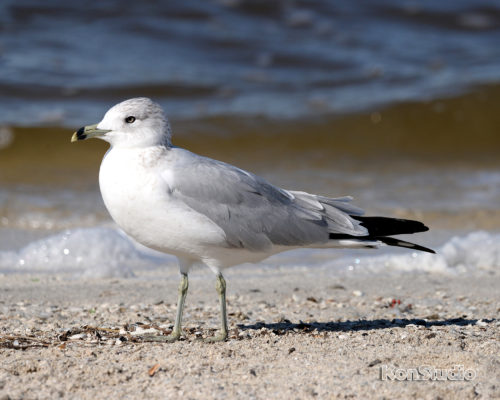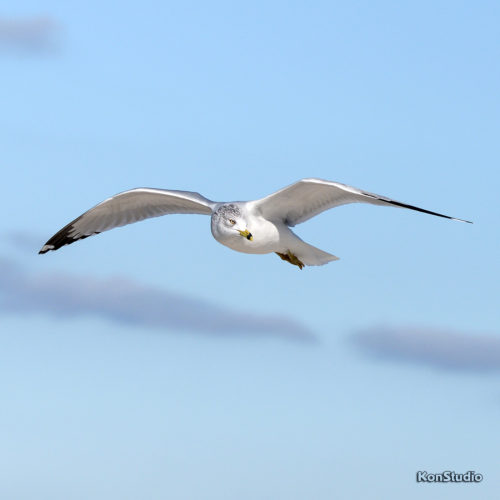Ring-billed gulls, Larus delawarensis, are the most common gull and can be found throughout the US. They have yellow legs, a gray back, and a black ring that circles their short, yellow beak. These medium-sized gulls can fly at speeds up to 40 mph and skillfully remain motionless in the wind.
Breeding takes place in Northern US and Canada. Ring-billed gulls can be found throughout the central US in the spring and fall during migration. They spend their winters throughout the southern US, Mexico, and the Caribbean.
Look for Ring-billed gulls on the coasts and estuaries. Comfortable around humans, these gulls are frequently found near docks and harbors. They are commonly seen inland near lakes and ponds as well as in parking lots and landfills.
The Ring-billed gull’s natural diet consists of fish such as smelt, insects such as beetles and dragonflies, as well as rodents, earthworms, and grains. Unfortunately, they have acquired quite an appetite for french fries and other unhealthy, discarded human food.
Due to habitat loss and hunting, humans nearly decimated the Ring-billed gull population. The 1917 Migratory Birds Convention Act (Canada) and 1918 Migratory Bird Treaty Act (U.S.) offered the protection this bird needed to recover. Today, Ring-billed gulls are thriving and expanding their breeding territory.






Recent Comments